This afternoon Garmin has announced that it has acquired the cycling aerodynamics focused company Alphamantis. What’s that? You’ve never heard of Alphamantis before? Shame, you’ve been missing out on some pretty cool stuff.
Alphamantis has actually been around a number of years in the aerodynamic realm. In fact, I first met with them almost 6 years ago in a dimly lit hotel room where they demonstrated their aerodynamic sensors using a fan borrowed from the front desk. While I took many photos that September 28th of 2011, I wasn’t able to end up using them. Same goes for the videos too. However, finally, 6 years later I can give you a small peek at what they were doing way back then.
But before we do that, we need to cover some other bits.
While the project above continued to cook along in the background, the company became more public about other efforts, most notably their aero testing and timing platforms. You may remember back in May of 2013 when, during a trip to California, I tried out the aero testing platform which used indoor velodromes to determine very detailed elements of aerodynamic fit. The benefit to this over a wind-tunnel is that there the rider is actually going somewhere on a bike, and not stuck in a static spot. That system is Alphamantis, though the testing done is by individual test facilities licensing the Alphamantis technology.
During my time riding in circles around the track 4 years ago we mostly focused on aero testing a few gizmos and gadgets, rather than my position. But these days many pro tour teams and individuals (including Team Sky), as well as numerous age group athletes, use the platform to do testing of gear prior to the season. This service is offered in 10 different velodromes around the world today, and usually include some element of a bike fit too (since that’s a critical piece to the aerodynamic puzzle).
But here’s the thing: That’s not what this acquisition is about.
Instead, it’s about that funky little device I saw 6 years ago in that dimly lit Canadian hotel room. That’s what Garmin is after.
(Note: When asked about what happens to the existing Alphamantis customers, Garmin stated: “Our intention is that Garmin will continue to support existing customers on the Track Aero Systems and Timing for the foreseeable future. We highly value Alphamantis’ current relationships and experience working at the highest level of cycling.”)
But wait, there’s more important backstory. Remember last summer at Eurobike when Argon 18 announced their aerodynamically packed full of 15 bike sensors concept? I never ended up writing about it as things got kinda busy.
However, tucked away in the front of that was the most important piece of the story – an aerodynamic sensor:
Depending on which bike you were looking at that day, the sensor showed up in two different ways. One way, the more ideal/concealed manner (above), and then also the then current testing version in a secondary out-front enclosure (below):
This sensor was designed to measure aerodynamic changes at high fidelity, transmitting that back to a head unit running a Garmin Connect IQ app. Note on the second line the real-time CDA (aerodynamic drag), and on the 3rd line the wind speed.
So how does this tie into Argon 18? Well, the sensor above isn’t actually one Alphamantis made. But that doesn’t mean they weren’t involved with Argon 18. The two companies (both located in Quebec) worked together at some levels to make that bike happen, though the details are largely kept pretty quiet by both parties.
Which isn’t to say Argon 18 didn’t do a ton of work of their own, as they did (whatever Alphamantis’ involvement is exactly). There’s still a boatload of other sensors, software, and components that were part of that bike shown. A bike that is actually real and functional, though not yet being sold. Argon 18 still notes plans to make that happen however.
I noted a month later in my State of Sports Tech keynote that this area was ripe for innovation and consumer interest, even referencing the Argon 18 bike and sensor data (I’ve set the exact part of that keynote below if you click play – 45 mins and 52 seconds in):

Yet that wasn’t the only action Alphamantis aero going on at the time. While all this was going on, Alphamantis was starting to pitch their new aero sensor to not only coaches, teams, and other cycling brands…but also to investors.
And they had good reason to. If marketed correctly, an aerodynamic sensor that’s easily installed, unobtrusive, and easily understood through simple apps like the Garmin Connect IQ one shown above, could be a major market.
The sensor that Alphamantis was quietly pre-selling appears even smaller than the non-Alphamantis sensor shown on the Argon 18 bike. You can see it in this provided photo below, next to a standard 9V battery:
That my friends…that’s what Garmin is after.
The market for such a device (again, if priced appropriately) would be huge. Not only direct to consumers, but also licensed to bike brands such as Trek, Specialized, Argon 18, and more. Similar to how Quarq offers brands the ability to have ‘Quarq/DZero Ready’ crank sets, bike manufacturers could do the same. All of which provides Garmin with an easy selling opportunity.
And not just to sell consumers the AeroSensor (or whatever they end up being called), but also to sell them Garmin devices. Invariably the idea here would be to ensure that Garmin devices have the most detail from said sensor. This would likely be in much the same way that Garmin Vector pedals certainly follow all the ANT+ standards for power delivery (so you can use them with other bike computers), but at the same time there are specific functions which only work with Garmin head units (like seated/standing time and other Cycling Dynamics components).
The second question is how this might impact folks like PowerPod. They’ve got a sensor already in the market that measures these exact same things (albeit for post-ride analysis), and I’ve commented repeatedly that them developing a simple Connect IQ app was their best way to expand reach. While they’ve hinted in recent weeks that might be imminent, I suspect this will light a fire even more. Certainly one can debate the quality of data from either device, but until both devices are side by side and testable – it’s not really possible to state whether one device is better than the other. Either way, more choice is always good.
The final question is when consumers might see these devices. As expected, when asked, both Garmin and Alphamantis declined to provide detail. Alphamantis employees will remain in Montreal and as of today have become part of Garmin. This is similar to how when Garmin bought Metrigear (eventually becoming Vector), they remained in California and worked from there as a small team. Though these days that team spans multiple locales across North America.
If we look at another Garmin acquisition, that of BackTracker (which became Varia Radar), that was announced in January 2015, and they then announced the Varia Radar product that summer. But that product was very close to being shippable the previous summer, under the initial crowd funding campaign.
The key strength that Garmin brings to the table that Alphamantis doesn’t have is primarily manufacturing (and reach of course). Garmin is the rare unicorn in the sports tech (or even general tech) realm that actually owns their own factories. This allows them significantly more control compared to most over how a product is produced, the quality of the product, and the costs associated with it. Thus if Alphamantis was already close to shipping product, then the time between now and when we see a Garmin branded version could be very tight.
Either way – there’s definitely some sports tech excitement due down the road. I certainly wouldn’t expect anything at Eurobike or Interbike, since those are just over a month away. But I suspect that next spring might be ripe for new aero goodness.
With that – thanks for reading!
FOUND THIS POST USEFUL? SUPPORT THE SITE!
Hopefully, you found this post useful. The website is really a labor of love, so please consider becoming a DC RAINMAKER Supporter. This gets you an ad-free experience, and access to our (mostly) bi-monthly behind-the-scenes video series of “Shed Talkin’”.
Support DCRainMaker - Shop on Amazon
Otherwise, perhaps consider using the below link if shopping on Amazon. As an Amazon Associate, I earn from qualifying purchases. It doesn’t cost you anything extra, but your purchases help support this website a lot. It could simply be buying toilet paper, or this pizza oven we use and love.


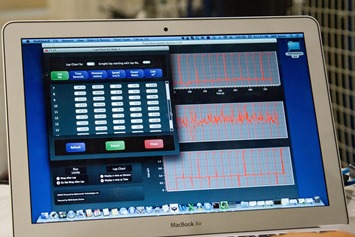
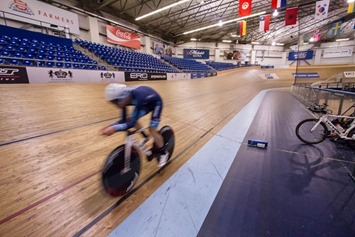


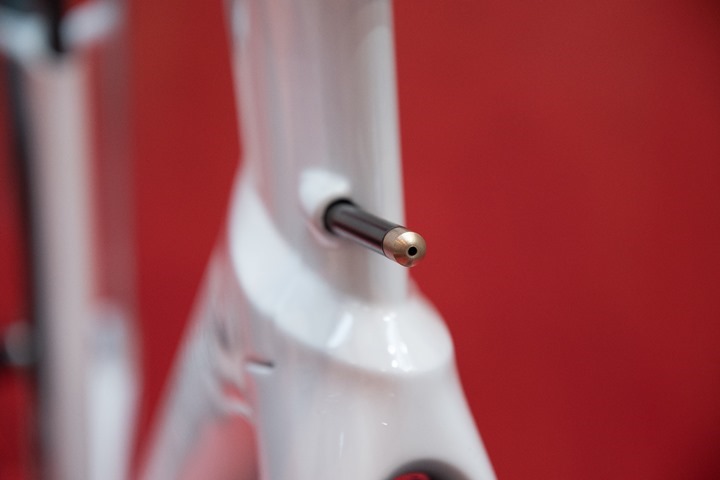
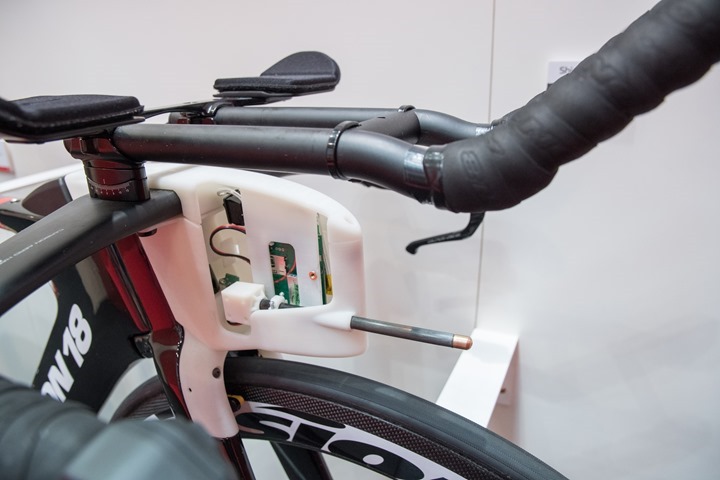
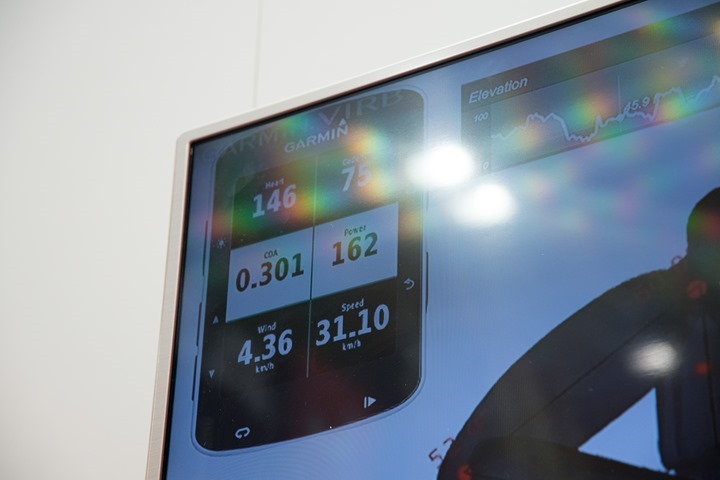



















So that is where the pitot tube from my airplane went.
Yepp.
No, I actually stole it. I’m still waiting for my airplane flight. I’ll give it back when I get my flight.
I can see use cases for other industries that Garmin supports–aviation and water navigation especially. Maybe sell sensors to place along golf course fairways that tie to your Garmin device to provide real time wind data to plan your club/shot. A good move.
Not sure the tech will help this old man triathlete be any faster, but like a lot of stuff I will buy it and try it out just because I like geek.
That is something, at the right price, I’d buy today
Real-time CDA, yes please.
Real-time feedback on position would make some nice gains possible.
I will probably waste my money on something like this when a good product comes out.
I keep meaning to go do some tests with my old Samsung phone and the app “Bike Cdacdrr ” but I’m still looking for a convenient loop without stop-signs or traffic. It looks pretty cool and there’s a Slowtwitch post for discussion that hasn’t seen much love lately.
link to forum.slowtwitch.com
This alphamantis/garmin concoction reminds me a bit of the SkippyKitten project.
http://skippykitten.tumblr.com
Yup indeed!
I thought of trying to tie that into this post as well, but I was already running a bit behind for a dinner reservation with the family…so had to cut my loses. :(
Very interesting development and I wonder to what extent Garmin will go further with acquiring or continue to develop sensors to measure ( mechanical / physiological, etc) feedback. If price is right I would buy one
I read this whole thing, and I don’t have any real idea what this sensor does. What exactly does it measure and what do you do with it? It tells you how aero your position is? How? Is the idea that you compare power and speed (which you presumably already have) and then control for wind?
It’s essentially measuring wind speed, which when referenced against known ground speed can determine what changes in position or gear are doing to your aerodynamics. When combined with a power meter, you can determine whether or not that decrease in drag was due to something you did that changed aerodynamic properties, or just because you tweaked your power output.
Wind speed yes, more importantly it measures yaw. That’s what makes it so interesting.. Here are the Alphamantis boys in very early testing in my apartment using my (now ex girlfriend’s) hair dryer link to vimeo.com The hair dryer didn’t make it through the entire test.. ;-)
Hmmm…imagine crashing and having that probe thing spear into you! Makes disc brakes look pretty benign.
Unrelated and random – Ray: at least once every other month I try to wipe away the dirt on my screen before realizing it’s just your website’s background!
I may or may not be guilty of that as well…
Was just googling to find out what happened to the aerostick the other day! Hoping this lights a fire under PowerPod – been requesting a connectIQ field for live CdA numbers for a while with no real response. IME the unit is simply too fiddly and unreliable to live with day to day but I think there’s a big market as an aero optimisation tool, especially for the large and generally technically aware TT and triathlon population.
I’m not sure that I want to quantify how NOT aero I am.
I’d like to measure the aero gains from drinking only protein shakes for week. In fact, ill ditch the scale entirely and qualify my physique by coefficient of drag.
Pitot tube, heads up display, radar. All haft is left for Garmin to make a bike into an airplane is the wings – next acquisition? But to your point, Garmin brings those earlier acquisitions to simple to use and solid products.
When paired with a crank. pedal or hub based power meter, the Newton6 power meter (same guts as power pod but unsophisticated LCD display) has had real time CdA for years.
Might be too late now for power pod though, since if Garmin owns alphamantis, is it in their interest to allow a realtime CdA field to be implemented in ant+?
John Hamann?
I don’t think it’s too late at all for PowerPod.
I figure they’ve got about a 6-9 month jump start, and like at half the cost advantage. It’s really about marketing and timing. If they (PowerPod) go into August with Eurobike and such and have a proper marketing/etc plan around what it can do, with Connect IQ apps for both Edge and watches (tri focused), and the right price point (I think $200 is perfect), then they have a very good chance of winning the battle for quite some time.
Yeah, I don’t think Garmin can prevent them from doing a real time CiQ app without destroying CiQ. All PowerPod needs is the power from a DFPM, which is available to CiQ apps already I think, and they measure everything else they need. And they can always do things after the fact in Isaac by picking up the ANT+ signal from a DFPM on the PowerPod itself. What PowerPod can’t do but conceivably what Garmin can is to build this sensor into an Edge (looks a little long now, though). Then you have an Edge with a built air speed sensor which in combination with a speed sensor can do what the PowerPod does, and in combination with a DFPM can do real time CdA internally. And as a bonus you know how bad that awful head wind was (something I look at with my PowerPod already) :-)
We are delighted about the Garmin acquisition, because it will create more interest in aerodynamic measurements.
But we’re not hyperventilating about the announcement. Sticking a pitot tube in front of a bike looks cool, but getting useful/reliable information out of it is another thing.
Remember when Garmin acquired Metrigear? It took them over 3 years to get Vector to market. We will see how long this takes.
In the mean time, we have 13 years of experience in deploying wind sensors in bicycle applications, and it was 10 years ago that we first introduced CdA measurement.
We have learned a lot and are doing some cool things of our own right now; stay tuned!
Exciting stuff! Whatever product they are cooking, I hope they can bring it to market as quick as they did with the Varia Radar.
“Aerodynamic sensor”, looks a lot like a kiel probe to me. Like they use in formula 1, to measure airflow round a car: link to youtube.com
I know Andy still has a Garmin email address, but has ANYONE heard anything about Garmin’s aero sensor since… what, 2020? 2021? I know there was an unplanned public showing of a garmin web page that quickly went down, but I can’t get my sources at Garmin to provide anything.
Ironically, Mark Ersting has been getting great reviews on the Gibli.